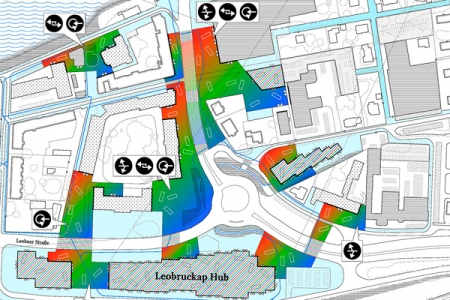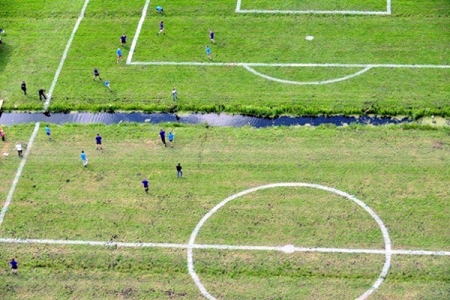Together
Bruck/Mur (AT) – Runner-up
TEAM DATA
Team representative: Jose Manuel López Ujaque (ES) – architect; Associates: Francisco García Triviño (ES), Katerina Psegiannaki (GR) – architects
Calle del Amparo 8, 28012, Madrid – España
+34 628 848 995 – jfk@kuneoffice.com – www.kuneoffice.com
See the complete listing of portraits here
See the site page here

J. M. López Ujaque, K. Psegiannaki & F. García Triviño
INTERVIEW
Click on the images to enlarge
1. How did you form the team for the competition?
The three of us come from different backgrounds and met at the School of Architecture of Madrid where we developed our PhD. After carrying out a common editorial project –“HipoTesis Fábrica de Bloques”– we decided to participate to Europan together. At that time Francisco and Katerina were in Madrid and Jose Manuel was on a doctoral stay in Argentina.
2. How do you define the main issue of your project, and how did you answer on this session main topic: Adaptability through Self-Organization, Sharing and/or Project (Process)?
Our project aims to give a spatial answer to Richard Sennett’s argument on the urge to regain our lost cooperation skills in modern societies. Sharing a working space was partially an answer, but we wanted to design a special way to share, not only with the ones that are similar to us but also with those who are different. The resulting space, both private and public, offers its users the opportunity to be together and the need to self-organize and share in order not only to coexist but also to create, grow and learn from each other.
3. How did this issue and the questions raised by the site mutation meet?
Bruck an der Mur together with the nearby cities of Leoben and Kapfenberg are in the process of forming one of Austria’s 38 city regions. “Together” proposes a number of strategic adaptations both on regional and city level, the main purpose of which is to connect and inspire sharing between Bruck an der Mur citizens, regional citizens and foreigners. Everyday situations of cooperation identify the site proposed project, which encourages working together as a necessary exercise in order to innovate, develop and undertake the needs of contemporary society. New public space areas, designed as urban carpets, join the disconnected pieces of the city, which are now isolated by huge roads and car parks. New buildings, existing ones and new small pieces of street furniture inhabit the urban carpets and establish a collective public space that stands out in a territorial manner.
4. Have you treated this issue previously? What were the reference projects that inspired yours?
We have been treating issues relating to Richard Sennett's concept of “Together” for a long time, almost since we moved to Madrid and realized that we learn more and grow faster by relating and working with people with ideas different from ours. Our first project to bring together diversity was an editorial project called HipoTesis. Then we participated in pedagogical projects promoting cooperation between strangers. All these ideas have appeared in several projects we have developed through the years; Europan being a perfect opportunity to carry them out. Apart from Richard Sennett’s book “Together”, we were inspired by Argentinian Artist León Ferrari’s Heliografias and Basque artist Maider López’s football fields in the Netherlands (Polder Cup) and the Arab Emirates (Football Field).
5. Today –at the era of economic crisis and sustainability– the urban-architectural project should reconsider its production method in time; how did you integrate this issue in your project?
Economic and environmental crisis urges a wiser use of common resources. One way to address this necessity is to make smaller and well considerate steps. From this point of view, the project we propose can be developed in consecutive phases through time. This way of proceeding will allow the evaluation and validation of the project, both from users and local authorities, before its completion. Thus, giving the possibility to readapt it and enhance it in following phases. On the other hand, the project also responds to the economic and environmental crisis through a social approach, bringing people together in order to collectively empower them and encourage self-organisation, which can serve not only personal purposes but also common ones.
6. Is it the first time you have been awarded a prize at Europan? How could this help you in your professional career?
Yes, it is the first time we have been rewarded. We think Europan is a great opportunity to carry out experimental projects that allows us testing our limits as architects and citizens, thus enabling us to discuss innovative and sometimes transgressive ideas with local authorities.








